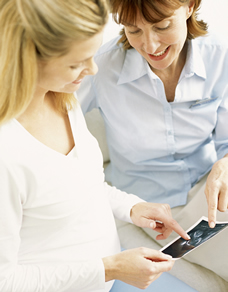20 Week Ultrasound
In this article, you will find:
What the scan reveals
By 20 weeks, your baby's organs and body systems are well developed and can be seen clearly on an ultrasound scan. The sonographer performing the scan will look closely at how your baby's major organs and body systems have formed and whether there are any indications of a problem (see Your baby's checkups). In the majority of cases, the scan will reassure women that their baby is developing normally.
If your baby is found to have a problem, the sonographer will refer you to a maternal medicine expert who will confirm the findings and offer follow-up scans throughout the rest of your pregnancy. He or she will also talk to a pediatrician to ensure that they have enough information to take care of your baby at birth.
If you had a scan in the first trimester, your dates are unlikely to be changed after a second trimester scan. This is because dating is most accurate in early pregnancy when all babies essentially grow at the same rate. Later on, individual differences in growth start to appear, making it harder to tell if your baby is just big for dates or if you are further along than thought.
However, if you didn't have a first trimester scan, the sonographer may change your dates if your baby is 10-14 days smaller or larger than expected. If your dates have been confirmed by a first trimester scan, a substantial lag may be a sign of a growth problem in your baby (see Growth charts), although this is rare.
Measuring your baby
Because your whole baby no longer fits on the screen, the crown-rump length won't be measured. Instead, your baby's size will be calculated by combining a series of measurements in a mathematical formula. The sonographer will measure the width (biparietal diameter) and circumference of your baby's head, the circumference of your baby's tummy (abdominal circumference), and the length of your baby's upper leg bone (femur length). These measurements help estimate the size of your baby and check that this is within the normal range for this stage of pregnancy.
The placenta will be examined to ensure that it appears normal and isn't blocking the baby's exit route (the cervix). It's quite common in early pregnancy for the placenta to be low-lying and to cover the cervix, but in 95 percent of cases, the placenta moves up and out of the way by the third trimester as the uterus grows.
If your placenta is low lying, your doctor will arrange a follow-up scan later in pregnancy to check that the placenta has moved up out of the way. If a later scan shows that it has failed to move up, a condition known as placenta previa , you will be monitored until the birth.
The amniotic fluid is assessed to check that there isn't too little or too much. If there is too much fluid, it may be possible to drain some using amniocentesis to decrease the risk of later complications such as premature labor. Too little fluid can indicate a problem with fetal growth or your baby's renal tract and your baby may need to be monitored.
